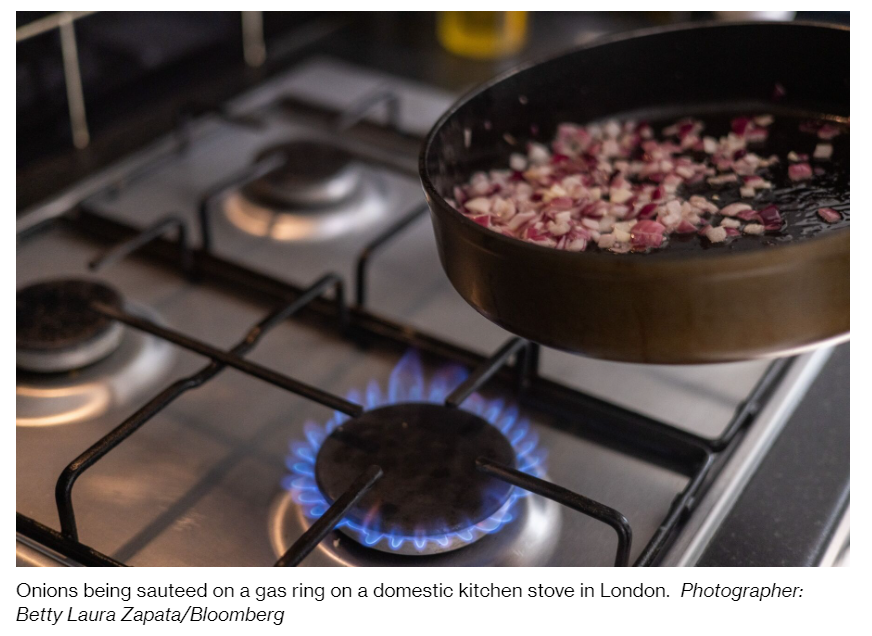A study spanning seven European countries found that concentrations of nitrogen dioxide were twice as high, on average, in homes that cooked with gas.
Households with gas stoves are regularly exposed to unsafe levels of air pollution that are above legal limits, a Europe-wide study found. By measuring exposure to nitrogen dioxide in homes with either gas or electric cooking appliances, researchers determined that NO2 concentrations were twice as high, on average, in homes that cooked with gas.
“The severity of indoor air pollution that is found in homes with gas cooking equipment is significantly higher than what we’re seeing in electric cooking homes,” said Nicole Kearney, director of CLASP Europe, the NGO that commissioned the study. “The levels of indoor air pollution are higher often than what we see outdoors.”
Calls to regulate gas stoves have grown stronger in recent years as the health risks become clearer, particularly for children, the elderly and people with pre-existing conditions. In 2022, a US study connected more than 12% of current childhood asthma cases to gas stove use. The World Health Organization finds that children living in homes with gas stoves are at 20% higher risk of lung conditions like bronchitis and pneumonia.
For the study, the nonprofit Netherlands Organisation for Applied Scientific Research coordinated with CLASP to install sensors in 276 homes across seven countries — the Netherlands, Italy, Spain, France, Slovakia, Romania, and the UK — chosen for their higher-than-average share of households with gas cookers and of pediatric asthma associated with cooking on gas. Roughly 80% of homes in the study used gas for cooking, while the other 20% used electricity. The sensors measured levels of NO2, carbon monoxide and fine particulate matter in the kitchens and other rooms of the participants’ homes, as well as outdoors, over a 13-day period.
On average, levels of NO2 were higher outdoors than indoors for households using electric appliances. For households using gas, levels were higher indoors. Average kitchen levels in gas-cooking households were around 26.8 μg/m³ (micrograms per cubic meter), compared to 14 μg/m³ for electric.
The most extreme readings were even higher. One in four gas-cooking households exceeded the EU and UK hourly average legal limit of 200 μg/m³, and 57% exceeded the WHO’s recommended level of 25 μg/m³ as a daily average. For households with gas cookers, NO2 levels continued to increase as long as the stove or oven was on, which was not the case for electric cookers.
This is the largest European study of air pollution from gas cooking in homes to date, CLASP said. The organization called for subsidy programs that favor zero-carbon heat sources, such as heat pumps, to also include highly efficient electric induction stoves, and for energy labels on appliances to carry information about indoor air pollution. Legal limits on air pollution don’t apply indoors in the European Union or the UK, and regulations around appliance safety do not set specific limits on pollutants.
“We spend 80% to 90% of our time indoors, on average. Vulnerable groups might spend even more time indoors,” said Christian Pfrang, a professor in atmospheric science at the University of Birmingham, who was not involved in the research. “This particular study is comprehensive and adds evidence directly comparing indoor and outdoor pollution, and showing that NO2 is really a problem of gas hobs. It will lead to needless exposure of people to NO2 because there is a viable alternative to gas hobs.”
Article Credit: bloomberg
